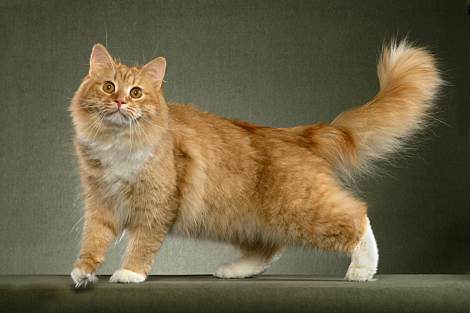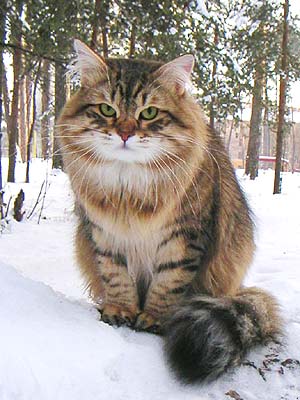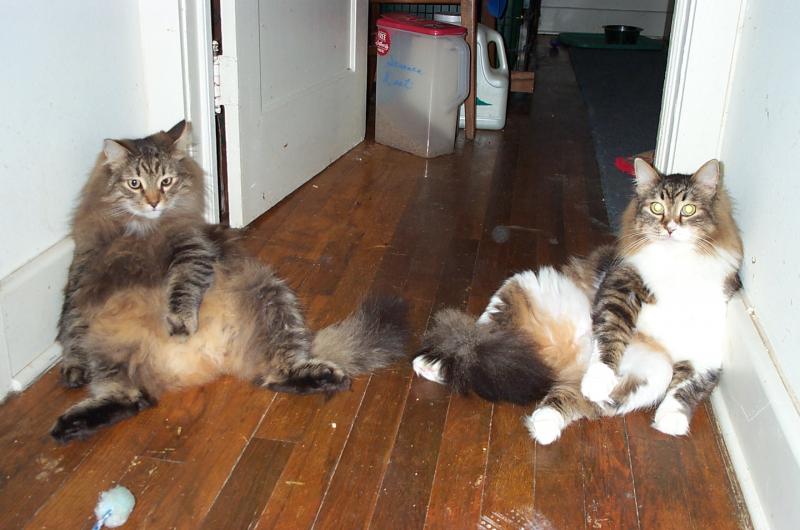



|
Siberian Description
The Siberian hails from the unforgiving climate of Siberia and is designed to survive. Extremely slow to mature, this breed has a moderately long to long coat of triple thickness that comes in any and all colors and combinations. Siberians with pointed coats are called Nevsky Masquerades in their native Russia. This is one of the largest breeds of cat, with females weighing between 13 and 17 pounds and males between 17 and 26.
The shape of the Siberian head is that of a modified wedge, medium to large in size, with rounded contours and is proportional to the body; males should have well developed jowls. Ears should be medium to large, rounded and tilted slightly forward. They should be set as much on the sides as on the top of the head and should have furnishings. Eyes are to be medium to large in size and almost round, set more than one eyes width apart. They should be open, alert and expressive. There is no relationship between eye color and coat color.
Siberians have a medium body that is well muscled with a firm belly that gives the sensation of solid weight; moderate padding or a famine pouch is acceptable. The legs should be medium in length with substantial boning and should end in large, rounded feet with tufts of fur between the toes.
Siberian Temperament
The Siberian is a loving, friendly and intelligent animal. They have been known to open drawers and doors to get to an owner or toy, and are always finding ways to get into their food. Incredibly agile, the Siberian is able to navigate crowded bookshelves without knocking things over, quite a feat considering they are not a small cat. Their ability to jump is quite stunning, appearing at times to 'fly through the air'. They communicate with a variety of chips and trills, happily greeting a returning owner at the door with this charming form of communication.
Siberian Care
Regular brushing to reduce hair balls is the only grooming necessary for a Siberian. They have no known hereditary diseases.
Siberian History
The Siberian is at least 1000 years old, however finding information about the cat from their homeland of Russian is very difficult, despite its status as the national cat. It seems to have been somewhat taken for granted and this, combined with the vastness of the country have made learning anything about the original history of the breed virtually impossible. They have, however, been shown in Europe for at least the last hundred years and are even mentioned in Harrison Weir's 19th century book, "Our Cats and All About Them". Though there are photos of the cats in the cat shows of the late 1800's, the first Siberians were not imported to America until the 1990's. The first Siberians were a gift to a breeder who had sent some of her Himalayan's to Russia to help establish breeding programs for the national cat. This same breeder, Elizabeth Terrell, is responsible for getting the breed recognized in America. It was accepted by the CFA in 2000 and received Championship status in 2006. Despite it's popularity, the breed is still quite rare.
|